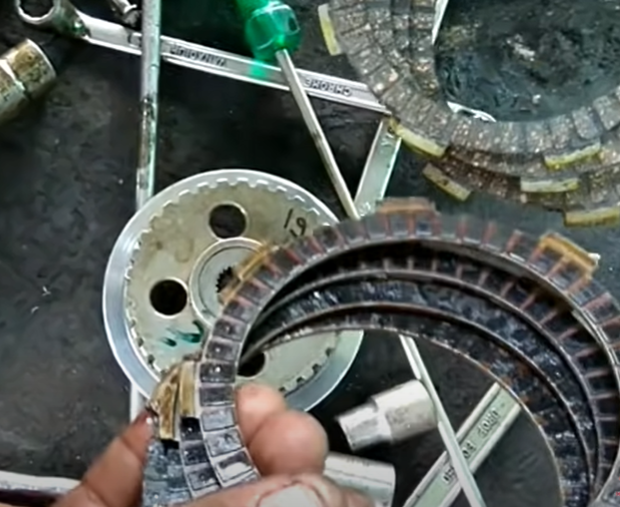How does clutch works
Author:
Enya
From:
Enya zhou
Date:
2021-12-30
Popularity:
816
【Font:
T
T 】

The heart of the clutch mechanism is a stack of alternating plates. The number of plates varies between different types of clutches, but no matter the number you will have a combination of fiber and steel plates. The fiber plates have a layer of material bonded or riveted to both sides of a metal core. The material was originally asbestos, but in modern times that has been replaced with organic resins. Whatever the material, its sole purpose is to create friction against the steel plates. The steel plates are just that, flat steel plates are placed in between the fiber plates. Once the plates are stacked together, they are mounted between the drive disc and the releasing disc. These are basically a top and bottom plate which are machined smooth so that the fiber plates can ride against them just like they ride against other steel plates in the stack. the releasing disc is shaped like a top hat that is keyed to the steel plates. You'll also note three alignment dowels that keep the drive disc and releasing disc locked together when assembled.

When assembling the clutch, the fiber and steel plates are stacked onto the releasing disc in alternating order, starting with a fiber plate. The steel plates are locked to the releasing disc via their internals keys so they all spin together as one unit. Also, pay more attention to the fact that the keyways on the releasing disc are slots which allow the steel plates to move up and down. The fiber plates on the other hand are just "floating" between the steel plates.
Once the drive disc is placed on top of the above stack of plates, spring loaded screws are used to hold the entire unit together. The screws pass through both the drive and releasing discs before threading into three clutch spring nut sectors. This design keeps everything aligned, but also allows for movement between the drive disc and the releasing disc. The clutch springs provide the friction between the fiber plates and the steel plates by sandwiching them between the drive disc and the releasing disc. When the clutch is engaged, the spring pressure is strong enough to hold all the plates together without any slippage. Remember that the fiber plates are not locked to anything, so without this pressure they could spin. As you would expect, spring pressure is matched to the horsepower/torque of the motor, so if you upgrade the performance of your motor you often need to use stiffer springs to keep the plates from slipping. As the fiber plates wear over time, the clutch spring screws can be tightened to take up slop and restore spring pressure. This entire unit is often referred to as a clutch system.